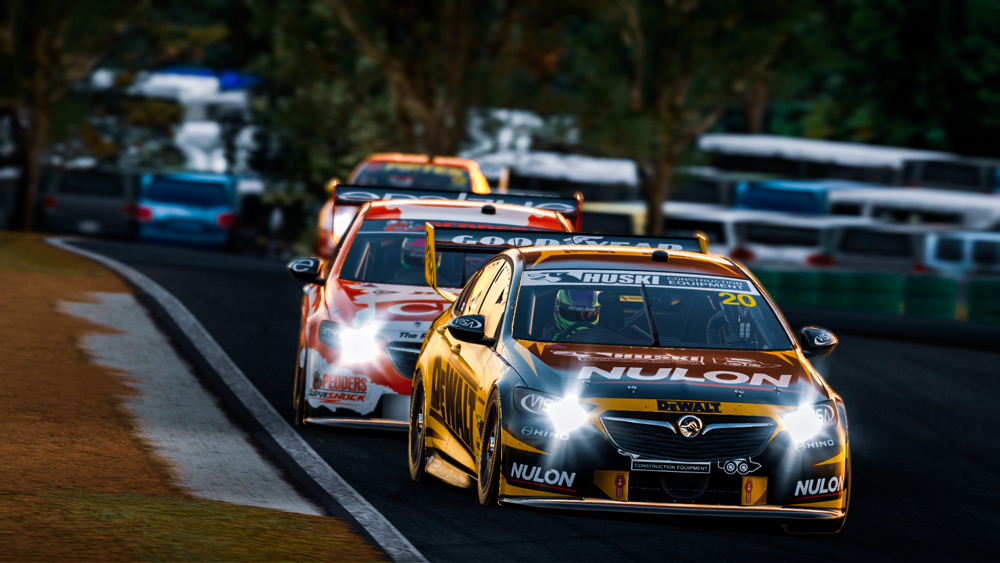SUPERCARS have confirmed their format for their first event back following the COVID-19 layoff and as many expected, it sits somewhere between being something new and something more familiar to fans of the series.
While some had hoped for something truly innovative – night races, reverse grids or similar – the ultimate outcome is perhaps slightly conservative but will, importantly, likely deliver a safe and solid return to racing for the category later this month.
Just two, 30-minute practice sessions will lead into a two-part qualifying session and then a top-15 shootout to set the grid for race one, which will be held on Saturday afternoon.
Two further sessions on Sunday will then determine the starting order for the next two races, on Sunday.
At 33 laps the races will be approximately 130km each – shorter than the usual 200km races that make up a usual round, but longer than the 120km sprints seen on the Saturdays of events last year.
It should make for just on an hour each race, with each to include a compulsory stop for a minimum of two tyres.
It’s a solid format which will see each day take place within a compressed five-to-six-hour window for the sake of TV. There is no break longer than 65 minutes between sessions on either day, which means viewers will have something going on at all times; no sooner have they finished debriefing one session, they’ll be looking ahead rapidly to the next.
The top-15 shootout is important, too; it will give a few more cars the chance for a couple of minutes of dedicated TV time; vital for sponsors in these troubled economic times.
“The thought of having a top 15 shootout is going to do so much for the youth and the inexperienced drivers going into the real cars,” Yellow Cover Matt Stone Racing driver Garry Jacobson told NTI Inside the Eseries this week.
“..so we can keep all of the people happy that help us afford to go racing, we can give them the publicity they deserve.”
Jacobson, who was a surprise packet of the just-completed 10-event Eseries and impressed in the first two rounds of the championship with Matt Stone’s small Queensland-based team earlier this year, said he felt several positives have come out of the break for virtual racing experienced across the last 10 weeks.
“I think it is important to highlight a positive I noticed which was behind the scenes. People may not know this but I feel like this I racing Esports series has brought all the drivers together where we actually give a lot of our input now and what we think will be good for the championship going forward in the real cars.
“We were brave enough to do reverse grid races, we were brave enough to mix up the rules a little bit and apply it a little bit, maybe, in the future to benefit of the sport in the future.
I don’t really feel like we’ve done that before, and that was a massive positive for me, because I felt like my voice was listened to from Supercars and I’m excited.”
The 28-year-old from Shepparton, in country Victoria, makes a valid point.
Supercars made no bones about the fact that while the Eseries was a way to keep sponsors, TV partners and fans engaged during an enforced break from real-world racing, it was also a way to test how drivers and fans would react to new formats and new ways of taking their product racing.
Across the 31-races, a variety of qualifying and race formats were trialled; all with a grounding in what happens in the real-world but with a few selected twists to test their effectiveness.

In essence, the Eseries allowed for the series to undertake some free testing in conditions as close as possible to the real thing.
Full-grid reversions are probably unlikely to make it from the virtual to real-world (it’s been tried before and while it promoted some wild racing, it also added enormously to the damage bill – one teams can’t afford right now), many remain hopeful that switching at least some of the qualifying order around may yet make it onto the real-world circuits this year.
Supercars ability to test ideas with the Eseries may well influence the way they go racing in the future; and while the Sydney format is certainly on the safe side, the priority is clearly getting back on track first, experimenting later.
But there’s never been a better time to throw the kitchen sink at the sport to occasionally try and mix up the pecking order, put some new names in the limelight and see if some new ideas can work in a sport that has been running a variation on a theme when it comes to formats for a long time.
Many commented across the last 10 weeks that the virtual world had many similarities to the real: it also proved that when you mix up the grid, different drivers have a chance to strut their stuff at the front of the field yet the cream generally continues to rise to the top.
Let’s hope that’s a learning the series can take from the successful Eseries and into the real world this year.




Comments